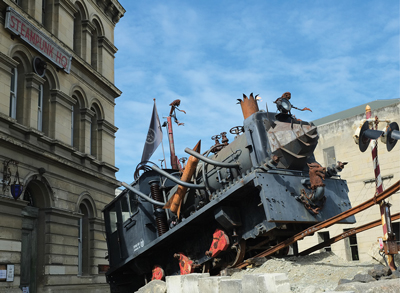Issue 90
Term 3 2014
New and revised subject headings
This is a summary of new and revised SCIS subject headings implemented in June 2014.
This is a summary of new and revised SCIS subject headings implemented in June 2014.
In this list the headings are marked with:
* Existing allowed headings which have been updated with changes to references or notes
A Headings which were previously USE references but are now headings in their own right
D Deleted headings
N New headings
U Previously allowed headings which have become USE references
Summary list
N Audiobooks
Scope note
This heading is used as a genre/form heading for recordings or oral readings of books. It is also used as a topical heading for works about recordings or oral readings of books, and may be subdivided by appropriate topical and/or form subdivisions.
A Blogs
Scope note
Use for works about websites created by an individual or organisation to record their news, opinions, interests, etc., often allowing comments from visitors.
* Industry
This heading, and associated headings, have been adjusted to rectify inconsistencies in the hierarchies and notes.
N Online social networks
Scope note
Use for works about online services dedicated to building social networks or social relations among people with shared interests, activities, backgrounds, or real-life connections. For works about online communications channels or media dedicated to community based input interaction, content-sharing, and collaboration, see Social media. Websites and applications dedicated to forums, microblogging, social networking, social bookmarking, social curation, and wikis are among the different types of social media.
N Secrecy
Scope note
Use for works about the state of being secret, concealed, private, secluded, and a lack of openness.
N Social media
Scope note
Use for works about online communications channels or media dedicated to community based input interaction, content-sharing, and collaboration. Websites and applications dedicated to forums, microblogging, social networking, social bookmarking, social curation, and wikis are among the different types of social media. For works about online services dedicated to building social networks or social relations among people with shared interests, activities, backgrounds, or real-life connections, see Online social networks.
N Social networks
Scope note
Use for works about networks of social interactions and personal relationships for individuals and organisations. For works about online services dedicated to building social networks or relations, see Online social networks.
N Steampunk culture
Scope note
Use for works about the subculture which has developed or originated from the genre, see Steampunk fiction. The most immediate form of steampunk subculture is the community of fans surrounding the genre. Some move beyond this, adopting a steampunk aesthetic through design, fashion, home décor, music, and a philosophical approach to life.
N Steampunk fiction
Scope note
Use for works of fiction including fictional films which depict an imagined time when machines use steam for power rather than modern engines and methods. Works in this genre include Mike Mignola’s Hellboy and H.G. Wells' The time machine. For works about steampunk fiction, use the heading Steampunk in literature.
U Weblogs
[New heading: Blogs]

Steampunk engine outside Steampunk HQ, an art collaboration and gallery celebrating steampunk culture in Oamaru, New Zealand. Photography by Pseudopanax. Public domain.
What is Steampunk?
'What would the past look like if the future had happened sooner?'
A sub-genre of speculative fiction, Steampunk imagines a world where the information age was ushered in, not by the electrical circuitry of the late twentieth century, but by the steam engines of the nineteenth.
Steampunk stories are typically written as alternate histories, speculating on the development of advanced, often impossible, technologies in Victorian-era England. However, just as many titles within the genre take place in a post-apocalyptic future or a fantasy world of pulp adventure heroes, top hats adorned with bronzed cogs and steam-powered zeppelins.
Most stories classified as ‘Steampunk’ share the use of steam and rudimentary electrical technologies, Victorian-era fashions, and colonial social norms as common elements. Often these literary devices are used in conjunction with styles reminiscent of nineteenth century speculative fiction authors such as H. G. Wells and Jules Verne.
This emulation of nineteenth century speculative fiction, as well as loose definitions of common elements, makes the origins of the genre difficult to pin down. Many works influential to the genre's formation, particularly H. G. Wells' The Time Machine, have been retroactively labelled 'Steampunk'. It is very similar to Mary Shelley's Frankenstein, which was retroactively labelled as gothic horror, instead of its original science fiction.
The term 'Steampunk' was first used by K. W. Jeter, in a letter to science fiction magazine Locus, when describing his 1979 novel Morlock Night, which features the Morlocks from H. G. Wells' The Time Machine travelling back in time to menace Victorian London. However, widespread awareness of the genre is often attributed to The Difference Engine, a novel written by William Gibson and Bruce Sterling, published in 1990.
Since then, the genre has seen a large number of works published, such as Philip Reeve's Mortal Engines quartet and Alan Moore's League of Extraordinary Gentlemen comic series, and has influenced a variety of other works, such as Disney's Treasure Planet, Hayao Miyazaki's Laputa: Castle in the Sky, and the World of Warcraft computer game.
A R Collins
Writer, student, and lover of genre
